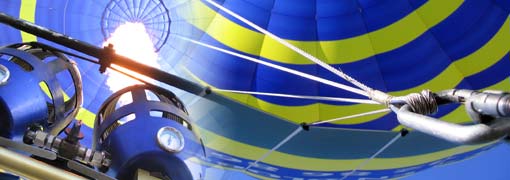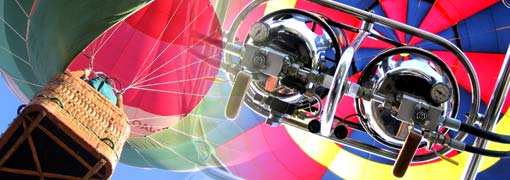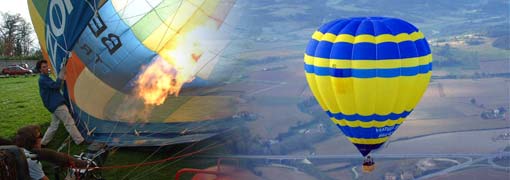





The hot-air balloon
Parts of the balloon
The actual hot-air balloons are set of three parts : the enveloppe, the basket and the burner.

The enveloppe is structured by panels sewed together, the fabric is in NYLON or POLYESTER resistant to high temperatures more than 220º Celsius. Its volume evoluates following models and end use of it. The most common ones that flyes are 1.800m3 and 3.000m3 for sporting and advertising use. Models made for carrying passengers in groups has a volume of more than 5.000m3..
The enveloppe and the basket are joined by INOX cables and karabiners. The basket is manufactured in wicker or rattan, forming a square or triangular shape.

The burners, up oriented, let escape 6 meters flames inside the enveloppe to heat the inside air in order to create the elevation. The combustible used is PROPANE gas, contained in special tanks fixed inside the basket. The average pressure is 6 to 10 bar, temperature of the flame overpasses 1.000º Celsius.

Instruments for aerial navigation and security operation are : an altimeter, a variometer, a termometer, a compass, a GPS, aeronautical maps with a scale of 1/50.000, a walki-talki and a fire estinguisher.
How does a hot-air balloon fly ?

A hot-air balloon doesn´t fly, but float in the air. That kind of flight is based on a physical science law, the Archimede theory of impetus, which applied to the air makes hot-air lighter than cold-air, therefore it will go for elevation.
How to control the direction during the flight ?

The only possible action for a hot-air balloon pilot is to heat the balloon to make it ascent or to let it cool down which cause the descent of the balloon. The horizontal direction is controled by the winds. Indeed, depending on the altitude the pilot will find different winds going in different directions and at different speed. It is thus the pilot experience to identify and handle with the winds that will make possible the hot-air balloon navigation. Good knowledges of aerology is a key-success for a good flight.
Go up








